Time To Bale The Hay
When we last left Harland, he had been cutting the hay. Two days later, after curing in the sun, it is ready to be baled. Harland unhooks the mower from the tractor, and hooks up the baler. The baler is pulled around the field over the windrow of hay left behind by the mower.
The windrow is pulled into the baler by a drum with teeth positioned at the bottom front of the baler. As it is pulled in, large belts compress and wind the hay into a bale, much like the way you would wind up a roll of toilet paper. Hydraulic pressure on the belts squeezes out the air and forms a tight bale. When it reaches full size, 1500 pounds and about 6 feet in diameter, a beeping indicator inside the tractor informs Harland. He stops the tractor, puts it in reverse, and drives slowly backward. Plastic net wrap is wound around the hay bale inside the baler. The wrap will hold the bale together. Finally, Harland flips the lever inside the tractor, lifting up the door of the baler. The newborn bale drops out onto the ground. Harland flips the lever again to close the door, and then he starts forward again driving over the windrow collecting more hay into the baler starting the process all over again.
Here’s a short video of Harland working in his “office”.
.
Next winter, this hay will be fed to our cattle. About 300 bales are needed to keep them fed through the winter. Click here for a post from last winter in which Harland feeds a couple bales to some hungry cows.
~~~~~~~~~~~~~~~~~~~~~~~~~~~~~
[ad name=”Google Adsense”]

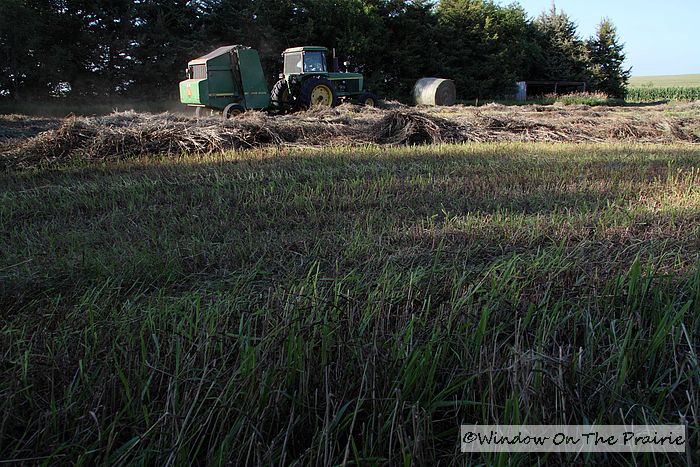
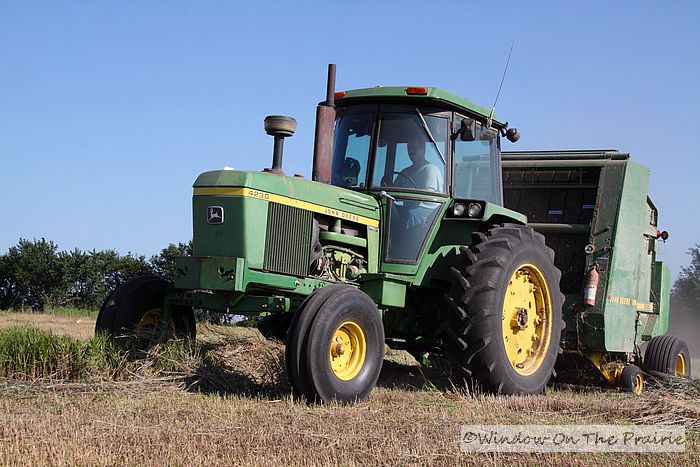
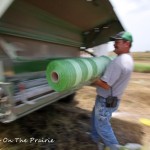
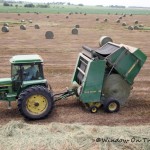
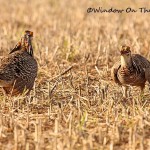
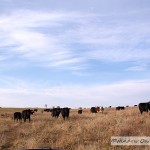

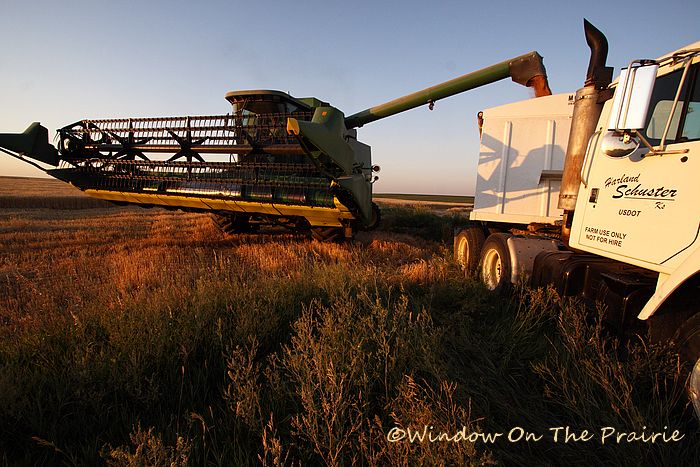
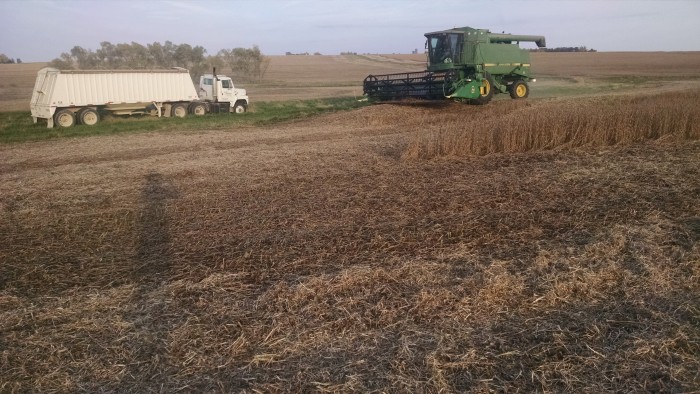
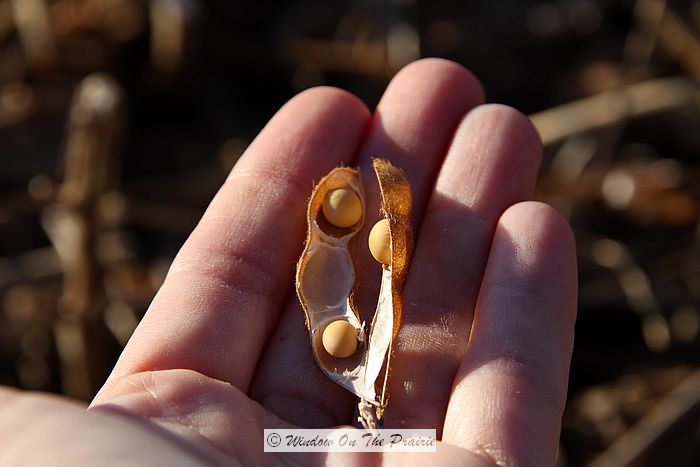
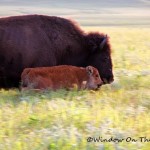
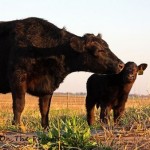
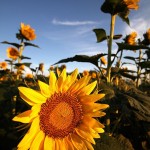

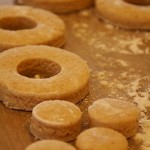
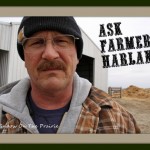




Wow that is slick as the dickens. Set here chuckling to see how neat that went and not a whole lot of dust like we used to get.
I suppose the tractor cab has AC too. Boy oh boy we didn’t even have a cab. Thank you so much for these havesting posts. Love it.
So grateful for AC.
I’ve know the theoretical way of how it was done and seen many bales, of course, but never knew all the details!! Thanks for the lesson!
When I was growing up, it was the square bales, dust and no cab at all! Lucky to have an umbrella over the driver.
You’re welcome and thank you Sue. I remember seeing hay being baled that way too. Today is still work, but not as dusty or hot.
Where I grew up there were only square bales and much smaller of coarse. There were also big haystacks made with a “beaverslide” contraption that always was cool to watch. That was a great job both of you.
We were up in Nebraska last weekend and saw those huge bales. Impressive.
Most of our hay is baled into small square bales for our cows, but occasionally we do some round bales…when it’s threatening rain, and then we bale them at high moisture and wrap them. Do you have a place to store them all, out of the weather until you need them? Or do they keep well, kept outside?
Ours keep well outside. Harland brings them in close to where the cattle winter, and he puts them into tight rows.
That is so cool! It looks like a lot of fun. I can’t imagine someone inventing the bale roller. I love seeing those elephants standing out in the field.
A wonderful invention indeed. Such a labor saver and no more dust to breathe in.
I’ve always wondered how those rolls get made!
Thanks for the tutorial! I’m still a city girl, but learning more about farm life, thanks to you!
Ironically, when I visit relatives in California, and say I’m from Kansas, they all think I must live on a farm!
LOL!
You’re welcome. and Thank you!
Thanks, very interesting! I’ve seen a lot of big, round bales, but never saw up close how they were made before.
I love the effect you used to fade one scene into another on your video. If I may ask, where did you get that, or how did you do it?
The transition from one clip to another is part of the Sony Vegas Movie Studio video editing software I use. There are lots of transitions included in the software, and I just choose one I like and then then click and drag it to the gap between clips. http://www.sonycreativesoftware.com/moviestudiope
Harlan is doing such a great job. John Deere’s the best! That what my friend in Missouri always said. Let the good times roll!
Thanks Peggy. Harland is definitely a John Deere man.
I love hay bales. There’s just something so pleasing to the eye when driving past a field of baled hay. I was at my sister in laws house about 2 weeks ago and the farm across the way had bales of hay, the land is true-style rolling acres Pennsylvania. The sun was setting and it was the most beautiful sight! Guess what? I didn’t have my camera! Dang!
I agree with you. Haybales speak of a job done, and food for the winter ahead for the livestock. It’s a peaceful feeling.